An American WC-135W ‘nuke sniffer’ aircraft is currently over Scotland heading towards Norway.
The aircraft arrived in the UK recently and has been operating out of RAF Mildenhall, conducting missions over central and eastern Europe as well as over the Mediterranean Sea.
https://twitter.com/geoallison/status/1501182628174643204
The ‘Constant Phoenix’ is designed to ‘sniff’ radioactivity associated with nuclear material and has previously been used to trace radioactivity from Russian vessels.
Previously, air sampling missions were routinely conducted over the Far East, Indian Ocean, Bay of Bengal, Mediterranean Sea, the Polar regions, and off the coasts of South America and Africa. The last visit of such an aircraft to the UK was August last year.
More notably, back in 2017 an aircraft was deployed to RAF Mildenhall to conduct missions over Europe after air quality stations across the continent detected traces of radioactive Iodine-131. As mentioned above, the aircraft has been used previously to trace radioactivity from Russian submarines.
Historically, the WC-135W fleet played a major role in tracking radioactive debris from the Soviet Union’s Chernobyl nuclear plant disaster.
What is the WC-135W?
The WC-135 ‘Constant Phoenix’ is U.S. Air Force a special-purpose aircraft derived from the Boeing C-135 Stratolifter (as also with the RC-135 ‘Rivet Joint’ signals intelligence aircraft used by the Royal Air Force).
According to the U.S. Air Force, its mission is to collect samples from the atmosphere for the purpose of detecting and identifying nuclear explosions.
According to military.com here, the Constant Phoenix has an on-board atmospheric collection suite, which allows the mission crew to detect radioactive “clouds” in real time. The aircraft is equipped with external flow-through devices to collect particulates on filter paper and a compressor system for whole air samples collected in holding spheres.


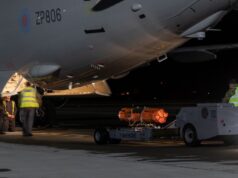
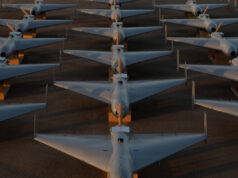
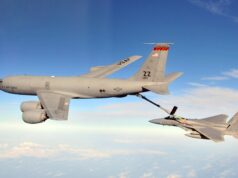
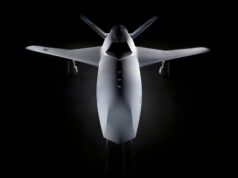

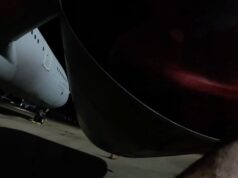
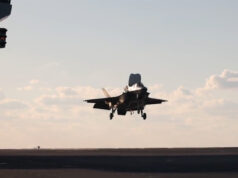
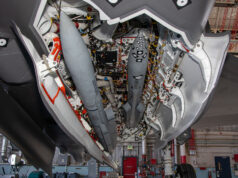

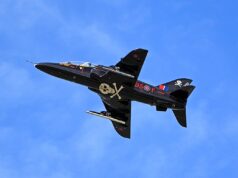

Some times I can’t believe the US can keep aircraft this old in the air, it’s no wonder their budget is so large and force numbers so small.
Their fleet availability rate can also be pretty poor on some types at times too.
There is nothing wrong in continuing to use old aircraft in this type of role. It does not need to be fast, agile or stealthy. It has good endurance. The aircraft ‘contents’ often cost more than the airframe. This justifies keeping an old plane going. Similar principles are often employed away from military aviation.
Yeah the US Air Force numbers are real small.
Largest Air Forces in the World 2022 (worldpopulationreview.com)
I’d love to know the limits of its submarine sniffing capabilities, so to speak.
It doesn’t sniff for subs. It’s an atmosphere sampling aircraft. It checks radiation levels against normal background levels. I used to fly on them. These machines are slated for replacement. 3 low houred 135s are being taken from ARRMAC and converted.
Bit confused by this comment, the article specifically says the plane was used to trace radioactivity from russian subs?
John, Okay without giving any secrets away, these nuke sniffers as they have come to be known Were designed to detect radiation from the testing of nuclear warheads that are as you know tested underground. My last mission was to test for atmospheric radiation after North Korea set one off in 2006. At the time the RAF had 3 K3 VC10s that could be converted to carry out the same missions as the American equivalent.
Yes obviously if an SSN or SSBN had a problem with their reactor it would stand to reason this assett would be used. If all we had to do was track SSNs with a nuke sniffer we wouldnt need the P8s. The big worry are Ukrainian nuclear reactors of which they have many of Russian design that are sited in a middle of an invasion.
Depending on the prevailing winds we we track wherever the Met Office guys would send us.
It’s not just radiation, there are by-products from a number of different processes that are either present in nature, or are not present in significant quantities without a man made source.
Neutrinos are a big clue to nuclear processes, although I am not sure you could put any equipment capable of useful detection on board an aircraft! But a bit like how 14C is used for dating, you can see signatures of the ratio of isotopes that are particular to nuclear processes. Caesium is a major one whose isotopes in nature are pretty well established.
We look for iodine 131 each weapon or reactor has a unique signature. I’m not sure what you are trying to say. Iodine 131 in the atmosphere then it s panic time because something has gone bang. I’ve not seen reports of any Russian subs with problems 🤔 maybe you could enlighten me.
The computing onboard can work out the difference from natural background radiation and any anomalie.
Radio isotopes although radioactive are measured by IRMS we do not carry spectrometers on board as there is no need. C14 does not degrade overtime where as testing the atmosphere after an event can tell us how big the bang was and we’re the radioactive fallout is likely to go, ie prevailing winds. Every mission we have a pre mission brief with the Met Office guys, met briefs are standard before getting airbourne but take it from me its not nice flying through radio active cloud.
I assume you mean 131….Iodine 151 might indicate a change in the laws of physics! (I am kidding, I know it is a typo).
But for example with Iodine 131, xenon 131is probably the marker, or certainly the ratio between the two, because 131I does decay relatively quickly – neutron to a proton, with an election and antineutrino* (good luck detecting that!) ….although it is a slight island of stability compared to the nanoseconds below it. But also from the consideration of detection you are moving from a highly reactive substance, to a pretty much inert – so the ability for indirect detection is magnified there. 131Xe is stable, and unless you own a couple of neutron stars you want to bang together, you’re not making a whole lot of it.
*Technically speaking a W- boson.
Yes David 131, you are correct we know high doses of iodine 131 ingested in high doses attacks the Thyriod. Yes iodine has a half life and degrades but it is highly volatile and highly radio active after an explosion. That’s what we look, for. Samples then go off to either Albuquequie N M or AWRE Porton down for the boffins to look at.
It’s a certainty Russia will use nukes within the next week. We are facing a tactical nuclear war in Europe and possibly an ICBM exchange with the continental USA.
The Nuke sniffer is in European airspace in case of Russian use of tactical nuclear weapons or a Ukrainian power station goes bang.
I think there will be an easy way to know if they do use a nuke
They leak radiation from time-to-time. There are excellent resources on YouTube about Akula class subs saiing with radioactive crap jammed between the hulls.
For accurate information on this tasking look for the book Super Snoopers, released in summer 2020. Has up to date details on all the specialist aircraft stationed at Offutt AFB.
I wonder if the Phoenix can distinguish between submarine and power station signatures. It does appear that Russia are not taking cautious measures to avoid a current nuclear power station incident. Would such an incident reduce the effectiveness of the phoenix?